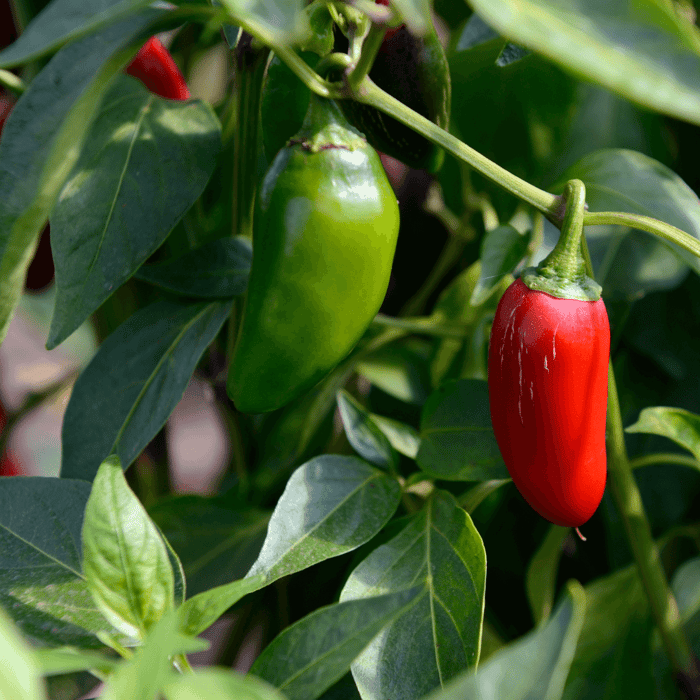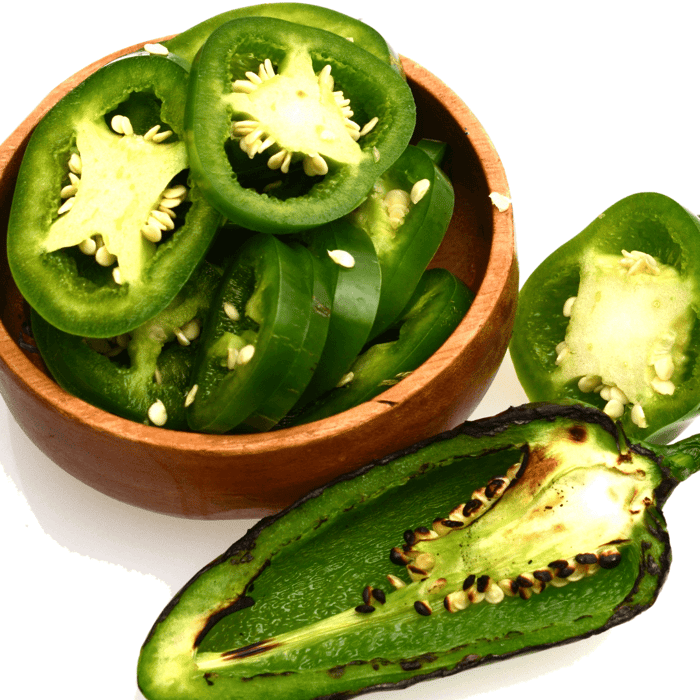Jalapeño plants, a variety of hot pepper, are famous for gardeners seeking to add spice to their homegrown harvest. This in-depth, step-by-step guide will teach you how to grow a jalapeño pepper plant from seed.
1. Choosing Your Jalapeño Seeds and Pepper Varieties
The first step in growing jalapeño peppers is selecting the right jalapeño seeds. You can find numerous pepper varieties at local garden centers, online seed retailers, or through seed catalogs. Here are a few things to consider when selecting your seeds:
-
Heirloom vs. Hybrid: Heirloom jalapeno seeds are open-pollinated and passed down through generations, while hybrid seeds are created by crossing two different pepper varieties. Heirloom seeds are often more flavorful and easier to save for future planting, while hybrids may be more resistant to diseases and pests.
-
Heat Level: Jalapeño peppers come in various heat levels, from mild to extra hot. Look for information about the Scoville Heat Units (SHU) on the seed packet or in the product description to help you choose a pepper with your desired heat level.
Jalapeño Pepper Seeds
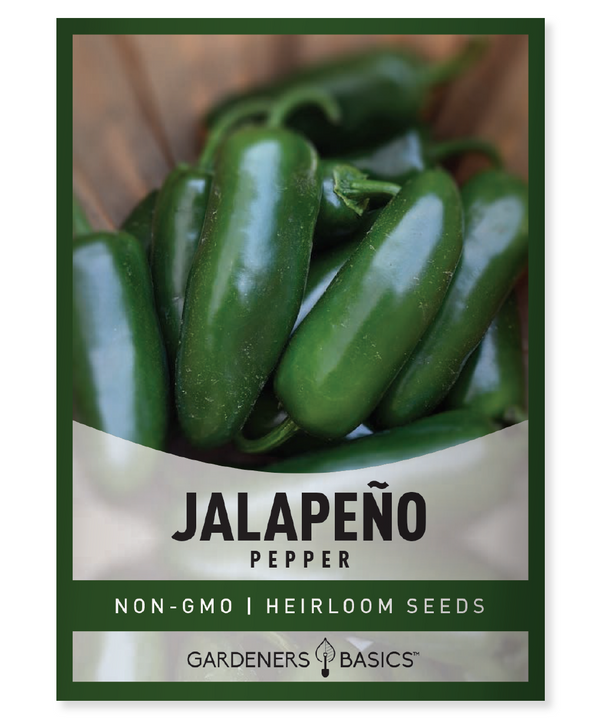
$2.49
Jalapeño Pepper Seeds - Heirloom, Non-GMO, Open Pollinated, Non-Hybrid & Planting & Growing Guide Looking for premium Jalapeño Pepper Seeds? Our seeds are heirloom, non-GMO, non-hybrid, and open-pollinated, ensuring top-quality, reliable growth. Jalapeños are a favorite among gardeners and chefs… read more
-
Plant Size: Some jalapeño varieties grow more significantly than others, so consider the space you have available when choosing your seeds.
2. Preparing the Seeds and Seed Starting Mix
Before planting your jalapeño seeds, preparing the roots and the seed starting mix is essential.
Seed Preparation
- Soak Seeds: Soak the pepper seeds in warm water for about 8 hours to help jump-start germination.
Seed Starting Mix
-
Choose a Mix: Purchase a high-quality seed starting mix, or make your own by combining equal parts peat moss, vermiculite, and perlite.
-
Moisten the Mix: The seed starting mix should be moist but not soaking wet. Add water to the mix and stir until it reaches the consistency of a wrung-out sponge.
3. Sowing the Seeds
When you're ready to sow your jalapeño seeds, follow these steps:
-
Fill seed trays, small pots, or egg cartons with the moistened seed starting mix, leaving about ½ inch from the top.
-
Place one or two seeds in each cell or pot, gently pressing them into the mix.
-
Cover the seeds with a thin layer of seed starting mix, about ¼ inch deep.
-
Label your trays or pots with the jalapeño variety and planting date.
-
Cover the trays or pots with a plastic dome or wrap to maintain humidity and warmth during seed germination.
Pepper Seed Assortment | 8 Variety Pack
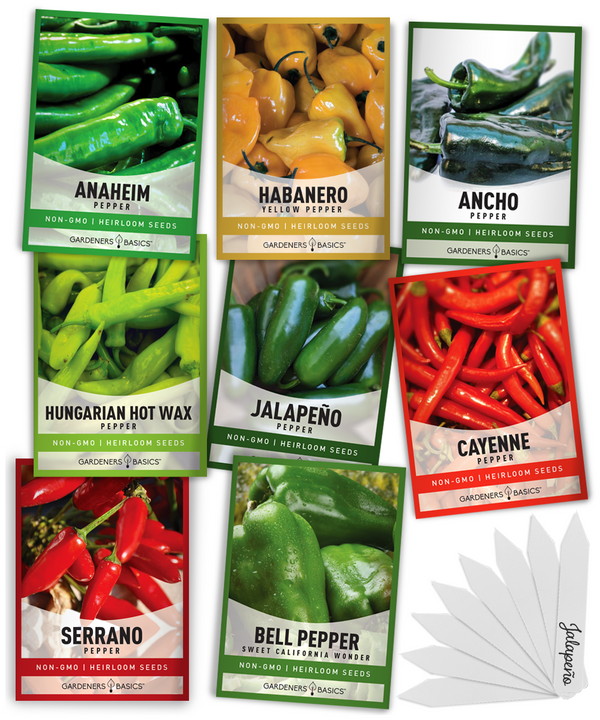
$15.95
8 Pepper Seeds Variety Pack – Heirloom, Non-GMO, Open-Pollinated, Non-Hybrid Seeds Elevate your garden with our 8 Pepper Seeds Variety Pack! This premium selection includes a mix of heirloom, open-pollinated, non-hybrid, non-GMO pepper seeds, perfect for beginner and experienced gardeners.… read more
4. Providing Optimal Germination Conditions
To ensure successful seed germination, jalapeño plants need warmth and consistent moisture.
-
Heat Mat: Place the trays or pots on a heat mat set to around 80-85°F (27-29°C) to maintain consistent soil temperatures during germination.
-
Light: While jalapeño seeds don't require light to germinate, once they sprout, they will need access to bright, indirect light. Place the trays or pots near a sunny window or under grow lights.
-
Moisture: Check the seed starting mix daily, and use a spray bottle to mist the soil as needed to keep it consistently moist.
5. Transplanting Seedlings
Once your jalapeño seedlings have developed their first set of true leaves (the leaves that appear after the initial seed leaves), it's time to transplant them into larger containers.
- Fill small pots or containers with a well-draining potting mix, leaving about 1 inch from the top.
-
Carefully remove the seedlings from their original containers to avoid damaging the roots.
-
Plant each seedling in a new pot, burying the stem to the first set of true leaves. This encourages the development of a robust root system.
-
Water the transplanted seedlings thoroughly to help them settle into their new containers.
-
Continue to provide the seedlings with bright, indirect light, and maintain consistent moisture levels in the potting mix.
6. Hardening Off the Seedlings
Before transplanting your jalapeño plants outdoors, they need to gradually acclimate to outdoor conditions through hardening off.
-
About 7-10 days before your planned transplant date, move your seedlings outdoors to a sheltered, partially shaded location for a few hours each day.
-
Gradually increase the amount of time your seedlings spend outdoors and the amount of direct sunlight they receive.
-
Monitor the seedlings closely, ensuring they don't become too dry or wilt from the sun.
-
After a week to ten days, your jalapeño plants should be ready to be transplanted into the garden or larger containers.
7. Transplanting Jalapeño Plants Outdoors
When the danger of frost has passed, and nighttime temperatures are consistently above 50°F (10°C), you can transplant your jalapeño plants outdoors.
-
Choose a sunny location with well-draining soil. Jalapeño plants need at least 6-8 hours of direct sunlight daily.
-
Space the plants 18-24 inches apart for proper air circulation and growth.
-
Dig a hole slightly larger than the root ball of each plant, and carefully remove the jalapeño plant from its container.
-
Place the plant in the hole, ensuring the top of the root ball is level with the surrounding soil.
-
Fill the hole with soil, gently pressing it around the base of the plant.
-
Water the transplanted jalapeño plants thoroughly to help them settle into their new environment.
8. Ongoing Care and Harvesting
To ensure a healthy, productive harvest, follow these tips for ongoing care:
-
Watering: Keep the soil consistently moist but not waterlogged. Jalapeño plants generally need about 1-1.5 inches of water per week through rainfall or supplemental watering.
-
Fertilizing: Apply a balanced, slow-release fertilizer at planting time and again when the plants produce flowers. Follow the package instructions for proper application rates.
-
Pruning: Remove any weak or damaged stems throughout the growing season to encourage healthy growth and improved airflow.
-
Pest Control: Regularly check your plants for pests, such as aphids or spider mites, and use appropriate organic or chemical controls as needed.
Hot Pepper Seeds For Planting | 5 Variety Pack
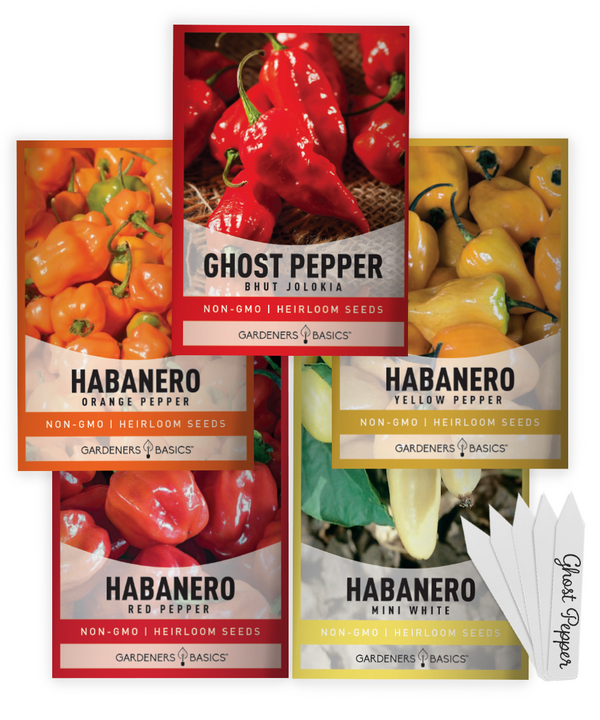
$9.95
Heirloom Hot Pepper Seeds – 5 Variety Pack, Includes Habanero & Ghost Pepper Seeds Spice up your garden with our 5 Hot Pepper Seeds Variety Pack—a must-have for any hot pepper lover or home gardener! This premium collection includes heirloom, non-hybrid,… read more
When harvesting your jalapeño peppers, look for firm, glossy, and 3-4 inches-long fruits. The peppers can be picked when green or allowed to ripen further to a red color, increasing their heat level. Use scissors or pruning shears to cut the stem, leaving a small portion attached to the fruit.
Following this in-depth, step-by-step guide, you can successfully grow jalapeño plants from seed and enjoy the spicy fruits of your labor throughout the growing season.
Frequently Asked Questions - How to Grow a Jalapeño Plant from Seed
Q: How long does it take for jalapeño seeds to germinate?
A: Jalapeño seeds typically take 7-14 days to germinate, depending on the soil's variety and temperature. Providing consistent warmth with a heat mat can help speed the germination process.
Q: Can I grow jalapeño plants in containers?
A: Yes, jalapeño plants can be grown in containers. Choose a 12-18 inches deep container with drainage holes, and use a high-quality potting mix. Be sure to place the container in a sunny location where the plant can receive at least 6-8 hours of direct sunlight daily.
Q: When should I start seeds indoors?
A: Start jalapeño seeds indoors 6-8 weeks before your area's last expected frost date. This allows the plants to grow large enough to be transplanted outdoors after the danger of frost has passed.
Q: How can I increase the heat level of my jalapeño peppers?
A: The heat level of jalapeño peppers can be influenced by several factors, including variety, growing conditions, and ripeness. Allowing the peppers to ripen from green to red on the plant will increase their heat level. Exposing the plants to some stress, such as slightly reducing water, can also increase the heat of the peppers.
Q: Can I save seeds from my jalapeño plants for future planting?
A: You can save seeds from your jalapeño plants only if they are heirloom or open-pollinated varieties. Hybrid plants will not produce seeds that are true to type. To save seeds, allow the peppers to ripen fully on the plant, then remove the seeds, rinse them, and allow them to dry thoroughly before storing them in a cool, dry place.
Q: How long is the growing season for jalapeño plants?
A: The growing season for jalapeño plants typically lasts 60-100 days, depending on the variety and growing conditions. Starting seeds indoors and choosing early-maturing types can help ensure a successful harvest if you live in an area with a shorter growing season.
Q: Why are my jalapeño plants not producing peppers?
A: Several factors can cause jalapeño plants not to produce peppers, including insufficient sunlight, poor soil conditions, over-fertilization, and temperature extremes. Ensure your plants receive at least 6-8 hours of direct sunlight daily, maintain consistent soil moisture, and provide a balanced, slow-release fertilizer. Also, protect your plants from extreme temperatures, which can negatively impact flowering and fruit set.

Q: Do I need to support my jalapeño plants?
A: While jalapeño plants are generally self-supporting, some varieties with heavier fruit loads may benefit from staking or caging. Providing support can help prevent branches from breaking under the weight of the peppers and can also make it easier to harvest the fruits.
Q: Are there any companion plants that can benefit my jalapeño plants?
A: Yes, several companion plants can benefit jalapeño plants by attracting beneficial insects or repelling pests. Some good companion plants for jalapeños include basil, parsley, marigolds, and nasturtiums. Additionally, planting jalapeños near other nightshade family members, such as tomatoes and eggplants, can help save space and make for a more efficient garden layout.
Q: Can I overwinter my jalapeño plants?
A: Jalapeño plants are typically grown annually but are tender perennials that can be overwintered in warmer climates or indoors. To overwinter jalapeños, prune back the plants to about one-third of their original size, and bring them indoors before the first frost. Place the plants in a sunny window or under grow lights, and water sparingly during winter. In the spring, gradually reintroduce the plants to outdoor conditions before transplanting them back into the garden or larger containers.



